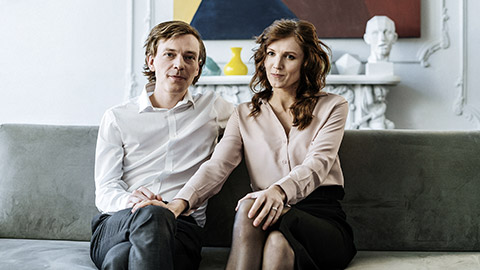In this section, you will learn to:
- Identify changes required to assist clients in meeting their goals.
- Formulate a process for program monitoring, recording, and intervention.
- Apply and record the program for change.
Supplementary materials relevant to this section:
- Reading E: Behaviour Modification
- Reading F: Behavioural Change Programs
Theories of learning provide a framework for understanding how behaviour develops. This, in turn, assists counsellors in helping clients to develop new, beneficial habits and ‘unlearn’ those that are not useful. This section of the module will explore how to integrate learning theories and behavioural techniques in counselling, focussing on structured behaviour change programs. While these are usually carried out by specialised behaviour therapists, the principles and processes are valuable for generalist counsellors and many other helping professionals.
Using learning principles, behaviour therapists maintain that maladaptive (i.e., unhelpful) behaviour is learned rather than a function of intrapsychic conflict or other psychodynamic processes, as is believed in some other frameworks. Behavioural counselling focuses on helping clients identify maladaptive behaviours, understand how these behaviours are maintained (i.e., what function the behaviour serves and/or how it is reinforced), and how these behaviours can be changed.
Behaviour change programs are based on the following four principles (Barkway, 2013):
- Behaviour can be explained by principles of learning (e.g., conditioning, reinforcement).
- The same laws of learning apply to all behaviour, both adaptive and maladaptive, common and uncommon.
- Problematic behaviour is the normal response to particular learning conditions.
- Behaviour can change with other learning conditions.
A behaviour change program is an intervention based on learning theory that focuses on helping a client change their behaviour. You may have also heard a behaviour change program referred to as behaviour therapy or behaviour modification (for example, in Reading E). While these terms are often used interchangeably today, historically, they were associated with classical conditioning and operant conditioning, respectively (Barkway, 2013). There are many forms of behaviour change programs, but the focus is always on changing a specific – and unhelpful or ineffective – behaviour. In line with behaviour theory, these programs do not attempt to change attitudes, motivations, personality, or other characteristics, which can be part of other forms of counselling. For example, if a strictly behavioural counsellor was working with a client who was engaged in problem drinking, he or she would design a program to eliminate the drinking behaviour, but there would be no focus on any attitudes, beliefs, or other psychological issues that could be influencing the alcohol problem. (You might like to reflect on whether or not you think this could be a weakness of the behavioural approach.)
Read
Reading E – Behaviour Modification outlines the main principles underpinning behaviour change programs, as well as their applications in areas including health, education, parenting, business and sports.
Behaviour change programs are generally developed by following these steps:
- Operationalisation of behaviour.
- Functional behavioural analysis.
- Establishing goals of behavioural change.
- Agreeing on a program of behavioural change.
- Monitoring and recording behavioural change.
Let’s explore how this is done.
When implementing a behaviour change program, it is important to remember that behaviours alone – not characteristics or attitudes – are the focus of change (Barkway, 2013). Behaviour, in this sense, can be defined as an “observable and measurable response or act” (Zastrow & Kirst-Ashman, 2013, p. 183). While this usually refers to verbal and physical behaviours and actions, some counsellors may also include thinking as an act. For example, it is possible to measure the number of times a person has a negative thought about themselves.
When helping a client change behaviours, it is crucial to obtain an in-depth understanding of the behaviour that has become problematic. A behaviour is not a single thing; instead, there are various components that combine to make or influence the behaviour, including:
- Actions (overt behaviour).
- Emotions.
- Bodily sensations.
- Thoughts and beliefs (cognitions).
For example, if a client’s presenting concern is ‘anger issues,’ the counsellor would want to know what this means in detail with regard to the components of behaviour, including but not limited to overt actions. The counsellor would also want to explore the particular situations or contexts the behaviour occurs in, if other people (perhaps particular people) tend to be involved, and so on. In this way, counsellors can translate a problematic behaviour or feeling into a specific and observable occurrence, mapping out what it involves and what might influence it. This means that it is better understood and is identifiable and measurable; it also allows for the identification of possible outcomes and the monitoring of progress towards these outcomes (Cormier, Nurius, & Osborne, 2013).
reflect
Often, we are so eager to help others that we jump straight into problem-solving without properly exploring what is happening, what influences it, and its effects. What might happen if a counsellor tried to help a client change their behaviour without taking the time to develop a thorough understanding (and help the client develop a thorough understanding!) of the problem behaviour and what influences it?
The operationalisation of behaviour occurs during the initial stages of counselling, as the counsellor explores the client’s presenting concerns and needs. Let's look at an example to help you understand this process better. As you work through the example, note how the counsellor explores the components of the behaviour.
Case Study

Caro, a counsellor, has just started working with Bob. Bob is a construction foreman who has come to counselling to address aggressive behaviour at work. Bob grew up in a dysfunctional family environment that involved physical and verbal aggression. His father used these strategies to intimidate, threaten, and harm Bob as a child.
Caro:You say that you get really angry at work. Could you tell me some of the specific things that you do when you’re angry at work? (Overt behaviours)
Bob: I guess I shout a lot and slam things.
Caro:What is going through your head at these times? (Cognitions and beliefs)
Bob: Well to be honest, I think ‘what idiots – you just don’t get it’.
Caro: Don’t get...
Bob: The way things actually work in the real world – on site.
Caro: So you’re thinking they don’t understand your point of view – what’s happening on site? What do you reckon they’re thinking?
Bob: I reckon they don’t respect me – because I don’t have any of those fancy degrees. But I know what I’m doing on site and I keep telling them what the problems are, but they just ignore me.
Caro: You reckon they don’t respect your experience and assessment of the situation?
Bob: Yeah I might as well be one the apprentices.
Caro: And what do you feel physically when this happens – when you feel they’re treating you like an apprentice? (Physical symptoms)
Bob: I get really wound up. My heart races and when it’s really bad, my hands shake and my whole body is just really tense.
Caro: I’m guessing that’s really uncomfortable Bob?
Bob: [Nods.]
Caro: Let’s have a look at this feeling wheel now. Can you point out what emotion you tend to feel most at these times? (Emotions) [Bob indicates ‘frustrated’ and ‘furious’.]
Caro: Now that we have a better idea of what happens when you get angry, let’s talk about when and where the anger tends to take hold. Can you tell me a bit about when you tend to feel and think those things we’ve just talked about? (Context or situation)
Bob: I’m at work – in the manager’s office.
Caro: So that’s when you feel most frustrated and angry – at work?
Bob: It does happen at other times. Sometimes if someone cuts me off on the road or gets in my face at the pub. But it doesn’t take much at work to get me started.
Caro: And is it usually with one particular person that you tend to get frustrated with?
Bob: It’s him and some of the other managers. I get on okay with the guys on the site.
Caro: So this is what you’d like to focus on specifically: figuring out how to handle your anger and frustration with management at work?
Bob: Yeah, I’m on my last warning. I need to do something about it.
Caro now has a better idea of Bob’s behavioural issue – they have operationalised the problem (although, in the real world, this process would be more detailed and take more time). Caro and Bob know that Bob tends to get frustrated and angry with his manager, whom he feels undervalues his opinion and input. This is expressed in the physical symptoms of anger, and Bob reacts aggressively. Although the anger occurs in other contexts, it seems to occur most frequently when Bob talks to his managers at work. Caro can guess where Bob may have learned to behave aggressively – his father modelled this behaviour. The next step is to undertake a more detailed assessment of the behaviour to understand what other learning principles have informed Bob’s developing and using aggressive behaviour.
How to Change People Who Don't Want to Change
The following video provides insight into how to best deal with clients struggling with change and why most behaviour change programs focusing on logic and explanation do not work.
Watch
reflect
Select a behaviour that you engage in and work through operationalising it. This does not have to be a problematic behaviour, although you might like to take the opportunity to help yourself identify and work towards making a positive change.
- What do you do? Describe the physical actions you undertake in detail.
- What emotions do you have?
- What bodily sensations do you get?
- What thoughts go through your head?
- Are there certain situations in which you are more likely to engage in the behaviour?
What have you learned about the behaviour you did not know before operationalising it? How will this help if you would like to make a positive change?
Before you can begin an intervention with a client to address a particular behaviour, it is useful to develop a full understanding of the behaviour, including how it works within the client and their environment. A functional analysis of behaviour, or functional behavioural analysis, uses the principles of operant conditioning and learning by reinforcement to describe the relationship between an individual’s environment and behaviour. It is important to remember that all behaviour, whether adaptive or maladaptive, serves a purpose or function in a client’s life. A functional analysis aims to uncover what this purpose is and how it is being reinforced.
The aim of a functional analysis is to identify factors that influence the occurrence and maintenance of a particular (problem or desired) response. This process should not be confused with other explanatory models that may seek to explain behaviour in terms of a medical diagnosis or a personality trait. Behavioural change programs are more concerned with the nature of our interactions with the environment than with our nature per se.
Barkway, 2013, p. 161
Read
Reading F – Behavioural Change Programs discusses the steps and considerations involved in conducting a functional analysis of behaviour. Whilst the article focuses on application in healthcare settings, the principles and concepts discussed are relevant to the counselling context. These steps are often referred to as the ABC model of behaviour, as it involves identifying three fundamental components of behaviour, as described by the operant conditioning theory.
The ABC model focusses on three ways that individuals interact with their environments: certain events precede the behaviour – these are known as antecedents (A); there is the behaviour (B) itself; and then there are the events that follow it, referred to as consequences (C). In this model, a consequence is an event following the behaviour that strengthens or weakens it; this idea will be familiar to you from section one (if it isn’t, review the information about reinforcement and punishment in your learning). An individual’s behaviour is also considered in relation to certain stimuli, such as the presence of particular people or settings.
- A (Antecedents): The stimulus/preceding events. This could be environmental, internal states, other people, etc.
- B (Behaviour): The response to the stimulus or triggering event. Behaviours may be overt or covert.
- C ( Consequences): The events that follow immediately from the behaviour: reinforcement or punishment.
Antecedents (i.e., stimuli)
Antecedents are the events occurring immediately before the behaviour itself. They invite the question, How have these events contributed to this behaviour? Zastrow and Kirst-Ashman (2013) provide the example of a person who has quit smoking and says they are able to avoid smoking cigarettes except when they attend parties. While other environments do not trigger this behaviour, the party condition acts as a stimulus (or antecedent) for the smoking behaviour. Other behavioural triggers may include emotional states (e.g., depressed, tired, anxious), environments (e.g., a particular setting or a type of environmental condition, such as being hot, noisy, cramped, etc.); and particular behaviours of others (e.g., when a certain person is present; when another person does or says something).
Note
While antecedents help us understand what often happens in the lead up to a behaviour and where that behaviour is more likely to occur (which is very useful for changing it, as you will see), it is important to note that antecedents are not to blame for behaviour. For example, an act of abuse or violence may occur in relation to the presence or behaviour of a particular person, but this antecedent is not responsible for the behaviour. In Bob’s case, which we return to shortly, the presence of members of management is one of the antecedents to his aggressive behaviour, but behaving aggressively remains Bob’s responsibility, not his managers’. Be aware, too, that clients may try to place the blame on antecedents to avoid accepting that their behaviour is their own responsibility. This is not only inaccurate and, arguably, unethical. It also reduces the likelihood of behaviour change – after all, if a person will not accept responsibility for their behaviour, how can they change it?
To help understand antecedents, counsellors might ask questions such as:
“What happened just before X?”
“What were you doing?”
"What were they doing?”
“Could you describe the event step by step?”
This requires counsellors to use their counselling and communication skills, like those you learned in previous modules. For example, in addition to open questioning and occasionally closed questions to confirm or gain clarity, counsellors need to use active listening, paraphrasing, and summarising throughout this process.
Let’s return to Bob and explore what the antecedents to Bob’s behaviour might look like. Notice how Caro uses questions, reflections, summaries, and other counselling skills while exploring antecedents with Bob.
Case Study
Case Study (Cont'd)

Caro: Let’s explore what’s happening around you when this anger is activated. Picture the last time you got really angry. Where were you? (Exploring antecedents)
Bob: It was last Friday. In the manager’s office.
Caro: What happened when you arrived?
Bob: Adrian was waiting for me. He was tapping his pen – like I was wasting his time or something.
Caro: What happened then?
Bob: I just sat down and gave him the schedule.
Caro: Tell me a bit about what was happening at that point for you – how did you feel in your body? (Exploring emotional state antecedents)
Bob: I was already annoyed with the pen-tapping thing. I guess I felt tense.
Caro: So even before you started your meeting, you were already annoyed. You felt like Adrian was sending the message that you were wasting his time. And your body was tense. (Summary)
Bob: Yeah not a good way to start I guess.
Caro: Tell me a bit about the argument you had then. (Exploring actions/ behaviours)
Bob: The guy’s an idiot. He didn’t like the way I did the monthly hiring schedule. I’m on the ground at the site – I know what we need. He doesn’t.
Caro: So it was an argument about a specific work issue? (Clarifying question)
Bob: Yeah that’s pretty much how it usually goes. I tell him what I think and he tells me I’m wrong. He won’t listen – just keeps spouting management speak at me. I have to shout to get him to listen to me.
Caro: So that’s a trigger for you then – the sense you get that your manager doesn’t take any notice of your assessment of the situation and then won’t give you a chance to explain your decision? (Paraphrase)
Bob: [Nods.]
Caro: And you feel like you need to raise your voice to get his attention? (Clarifying question)
Bob: Yeah. I know that shouting isn’t great but it’s the only way to get through to him.
Behaviour (Response)
Remember that from the classical conditioning perspective, behaviour is a learned response to a stimulus. The way a particular person responds to an antecedent is individual and contextual. The same environmental cue will mean different things to different people and evoke different responses depending on their experiences. For example, look around the next time you are waiting for a train or plane and an announcement comes over the loudspeaker to tell passengers it is delayed. This antecedent (the delayed train/plane) will trigger different responses in the waiting passengers. Some passengers might shrug their shoulders and take the extra time to get a coffee, while others may respond with aggressive behaviour, such as shouting or abusing staff; some will keep doing whatever they are doing, while others sigh and complain. People will also respond differently depending on the context. For example, a person might not mind if a train is late on their way home but become very upset if they are late for a job interview.
Behaviour can be both overt and covert. Overt behaviour is detectable by an observer. Overt behaviours include verbal behaviour (e.g., talking, shouting), non-verbal behaviour (e.g., gesturing, smiling, tone of voice), and other physical actions (e.g., hitting, running, eating). Covert behaviour includes events that are usually internal and are not generally visible, including emotions, thoughts, beliefs, moods, and physical symptoms. As you will not usually be able to see your client’s actual problem behaviour, you will have to ask them to describe it in detail. You might ask:
- “What did you do/say/think/feel?”
- “Who was involved?”
- “How long did it go on for?”
- “How many times has it happened?”
- “Does it always happen the same way?”
Consequences
And as you will remember from operant conditioning, reinforcement and punishment (i.e., the consequences of a behaviour) are events that follow and exert some influence on the behaviour, either increasing or decreasing the likelihood of that behaviour happening again (Cormier et al., 2013). People tend to engage in behaviours that have some payoff or value, even if that behaviour is dysfunctional or unhealthy. As you know, behaviour is more likely to reoccur if it is followed by an overt or covert event that is positively or negatively reinforcing, while unpleasant consequences (punishment) reduce the chance of the behaviour recurring.
It is important to note that longer-term consequences do not exert the same influence. An immediate consequence may make a person feel better, even though the long-term effects of the behaviour are very unpleasant. For example, watching a TV show instead of exercising pays off immediately, with the enjoyment of the show reinforcing TV-watching, when exercising would be the much better option for long-term health and functioning. Similarly, an immediate consequence may discourage a behaviour despite that behaviour having long-term benefits. Again, you will need to ask directly about the consequences of the behaviour and use your skills in clarifying questions, paraphrasing, and summarising in the process.
Think back to Bob. Although the long-term consequences of his behaviour are likely to be negative and may be extremely so (for one thing, he is likely to lose his job), there will be immediate payoffs (i.e., functions) of his aggressive behaviour. For example, he may get attention from his manager, perceive the manager as behaving more respectfully, feel a sense of power, or experience a release of stress.
- A - Antecedents (stimulus):
- Manager asks for justification of a decision, action, or cost
- Bob perceives manager as dismissive or disrespectful
- B - Behaviour (response):
- Overt: aggression, shouting, and slamming things down
- Overt: physical symptoms of stress
- Covert: thoughts and beliefs related to being disrespected
- C - Consequences (reinforcement):
- Manager pays attention to Bob
- Bob feels heard
- Bob feels powerful
- Bob experiences release of stress
reflect
Think again about the behaviour of yours that you explored earlier.
- What are the antecedents?
- What is the behaviour?
- What are the consequences? In particular, what might be reinforcing the behaviour?
By exploring the ABCs, both clients and counsellors better understand what influences the behaviour and the behaviour itself. This is the first step towards learning how to modify and change it. After this, positive change is made more likely by identifying and using intervention strategies that alter one, two, or all three of these components.
Check your understanding of the content so far!

Having completed a functional behavioural analysis, the next task is to work with the client to identify specific goals for behaviour change. Rather than setting a generalised goal like ‘stop being aggressive,’ it is important to use the analysis to identify specific behaviours and formulate goals that relate to those behaviours. You have learned about goal setting in a previous module, and it will be useful to keep those principles and techniques in mind when helping clients identify goals.
To begin this process, you might ask:
- “What one single thing would you most like to change?”
- “Let’s explore that in more detail. What would you have to do differently to …?”
- “What could you do differently next time that would result in a different outcome?”
- “How could you change the situation to encourage [alternative behaviour]?
In our case study, the counsellor helped Bob identify contexts in which Bob frequently behaves aggressively and the components of this behaviour. Specific goals for Bob might include:
- Developing skills for reducing the physical symptoms of anger (body tension, increased heart rate, shaking, etc.), that he can use in meetings with his manager.
- Learning skills for effective communication and using them with his manager.
Once you and the client have identified and agreed on an appropriate behavioural goal or goals (appropriate means relevant to the client and aimed at achieving the desired behaviour change), your next task is to decide what techniques will be used to help the client achieve their goal/s.
Behaviour Change By Design
This video outlines the crucial step to changing behaviour.
Watch

Behavioural programs are not appropriate for all clients and client issues, and different strategies will suit different clients and situations. It is up to you, as a counsellor, to use the information you have gathered, together with your knowledge of counselling processes and client issues (and, potentially, consultation with more experienced counsellors) to identify interventions that may be beneficial to the client. What follows are some common behaviour therapy strategies and techniques, some of which you might like to explore further and use in your practice. Such techniques are often based on stimulus and response principles, reinforcement concepts, or social learning strategies such as modelling and role playing.
Note
Although we are focusing on behavioural strategies and techniques in this module, counsellors more often use a combination of behavioural and cognitive techniques with clients (i.e., cognitive behavioural therapy) than behaviour therapy alone. You will be learning more about cognitive techniques later in your course.
Stimulus and Response Techniques
These are techniques based on conditioning principles that aim to modify or change either the stimulus or response components of the problematic behaviour.
Stimulus control involves “either modifying in advance the stimuli or cues associated with maladaptive responses and/or establishing cues associated with adaptive responses” (Nelson-Jones, 2015, p. 235). For example, a client who wants to control their weight might reduce their exposure to stimuli for unhealthy or excessive eating, such as not having high-calorie food in the house or storing it out of sight, altering walking routes to avoid fast food restaurants or stores where they regularly buy unhealthy snacks, and avoiding situations or people associated with over-eating. Stimulus control is also commonly used to promote adaptive behaviours, for instance, to associate your bedroom with sleep to improve sleep hygiene or associate your home office space with work if you are trying to increase productivity when working from home.
Response control involves interventions aimed at modifying the response (i.e., behaviours) directly. To continue with our weight-management example, instead of eating when exposed to an environmental cue such as high calorie food, the client could activate alternative behavioural strategies such as going for a walk, reading, or using a relaxation strategy they have learned in counselling. Exposure techniques such as systematic desensitisation, which we discussed in Section 1, are response control strategies.
As always with behaviour change programs, it is critical that an in-depth functional analysis is conducted beforehand, in addition to other assessments. This is important not only for understanding the problem and formulating a behaviour change plan, but because, in some cases, stimulus or response control will not be appropriate. For example, skills training is more appropriate and effective for particular issues (Nelson-Jones, 2015).
It is also important to consider the possible consequences of changes involved in stimulus and response control and to check that the consequences will not place the client at risk. For example, if a client wants to behave more assertively or otherwise change a relationship, it will be important to carefully assess the safety of the relationship before doing so. Some people who commit domestic and family violence will choose to behave in increasingly violent ways if the person they abuse tries to change their own behaviour. There will also be appropriate inclusions in behaviour change programs that nonetheless need additional actions before they should be begun; for example, imagine a client who wants to use exercise as an alternative response – they should receive medical advice before starting an exercise program. As such, actions to help a client prepare for a behaviour change program may be necessary (Nelson-Jones, 2015).
Reinforcement And Punishment Techniques

Many reinforcers such as praise, affection, and attention are given without the explicit aim of modifying behaviour, but simply because they are part of the natural interactions that occur during the course of everyday life. Similarly, punishing reactions can occur quite without any conscious thought or deliberate attempts to modify behaviour. Reinforcement and punishment techniques can also be administered systematically in behavioural change programs to initiate and strengthen adaptive behaviours and to weaken and eliminate maladaptive behaviours (Nelson- Jones, 2015). As what acts to reinforce or punish is highly individual (i.e., what one person finds reinforcing/punishing may not be reinforcing/punishing for another), you might find out what is reinforcing for individual clients by asking them, through observation, or by asking other people around them (only if this is appropriate only and the client has consented, of course!).
In classic behaviour modification, it is important that reinforcement (or punishment) be administered as close in time to the behaviour as possible. However, this does not necessarily need to be direct reinforcement. Indirect reinforcement can also be effective. Think, for example, about tokens given that can then be traded in for other rewards; after collecting a certain number of tokens (or indications on a chart, etc.), the person then gets a reward in the form of a desired object or experience. In the ‘real world’, it is not always possible to provide reinforcement or punishment immediately. In self-management programs, for example, reinforcement is not always immediate (although perhaps being able to anticipate them immediately could be reinforcing).
As well as reinforcers (sometimes called ‘rewards’), punishment or ‘sanctions’ may be used in behaviour change programs, such as ‘time out’ (removal from a pleasant environment, loss of privileges or desired stimuli, additional chores or other unpleasant tasks, or removal of tokens). When designing a behaviour change program, however, it is important to be careful with the use of punishment and, where possible, use it in conjunction with positive reinforcement (Nelson-Jones, 2015). For instance, maladaptive behaviours can also be weakened or eliminated by positively reinforcing alternative behaviour or incompatible behaviours that are incompatible with maladaptive behaviour. Remember the concerns about punishment, such as those we explored previously, and the advice that punishment be used sparingly.
Self-reinforcement is key in self-management programs. Particularly when working with adult clients, it is important to help them identify and increase the reinforcers available to them in order to facilitate behavioural change. Self-reinforcers can be external or internal (Nelson-Jones, 2015). External reinforcers include getting a treat, spending time with a friend, doing an activity the person likes, or attending a special event. Internal reinforcers include internal (covert) events that are pleasant, such as engaging in positive self-talk.
Clients should be encouraged to seek out people, activities, and situations that provide positive reinforcement and that they can access or administer themselves. For example, a client who is struggling to learn a new skill or develop a new habit might be able to connect with a friend who is trying to do the same thing, with the enjoyment and satisfaction of sharing the experience reinforcing the behaviour, or they might find some other activity they can combine with the change or use immediately after as a reward. Couples and families can also engage in reinforcement, such as smiling, expressing appreciation, and so on, to encourage healthy communication, increased connection, and other positive behaviour.
Before we return to Bob, let’s review the techniques commonly used in behavioural change programs (some of which we covered in previous sections):
Stimulus and response
- Stimulus control
- Systematic desensitisation
- Relaxation training
Reinforcement and punishment
- Applied behavioural analysis (ABA)
- Time out
- Tokens
- Self-reinforcement
Demonstration and practice
- Modelling/demonstration
- Role-playing
- Assertiveness training
Case Study
Case Study (Cont’d)
You will recall that Bob’s goals for behavioural change were:
- Developing skills for reducing the physical symptoms of anger (body tension, increased heart rate, shaking, etc.) that he can use in meetings with his manager. Bob and Caro agree that Bob will work at learning to identify when he starts to feel angry or stressed by tuning in to physical, emotional, and cognitive signs and to activate alternative behaviours when he identifies these signs. Caro helps Bob learn how to monitor his internal state and also teaches Bob relaxation skills that he is to practice daily so that they are familiar and effective enough to use when he notices the early signs of stress or anger. Over time, Bob starts practicing using relaxation skills in response to signs of stress or anxiety when he notices them.
- Learning skills for effective communication and using them with his manager. Caro models assertive and respectful communication and guides Bob through a social skills training process. As part of this process, Caro helps to imagine various scenarios that he would often respond angrily to and rehearses a different behavioural response. They also role-play conversations like those he has with his manager, in which Bob practices relaxation strategies and communicates non-aggressively. Both Bob and Caro reflect on Bob’s skill development and how he is communicating and identify specific areas to work on further.
Reflect
Reflect on Case Study
Can you think of any other behavioural change techniques you would want to implement with Bob if you were Bob’s counsellor?

As you learnt in Reading F, behaviour is recorded and monitored before the behaviour change program, during the program, and in the maintenance period. Doing this helps determine what kind of program should be implemented and how this will be done, and enables the counsellor and client to assess the program's effectiveness and make changes where necessary. It also motivates ongoing efforts as the client sees evidence of their changes. Common methods of recording and measuring behaviour include (Barkway, 2013):
- Narrative recording: Observing and recording relevant information about the target behaviour, such as where a particular instance of the behaviour occurred, what happened before and after the behaviour, and so on. This is particularly helpful in the identification of antecedents and consequences.
- Counting: The frequency of a discrete behaviour or outcome can be recorded using simple tally sheets or frequency counters.
- Timing: When behavioural change involves altering the duration of a behaviour, recording the time it takes the person to complete the target behaviour is necessary.
- Checking: A checklist of items can be used to assess whether a target change is achieved. For example, a parent may use a checklist of tasks to assess whether the child has appropriately completed a chore assigned to them, or an adult client might use a checklist to determine whether they have completed each step they need to remember in carrying out a particular task.
- Rating: This method allows us to measure the quality of a response. For example, a client may use a five-point rating scale to rate how anxious they feel, ranging from one (very calm) to five (very anxious). Note, however, that ratings are subjective rather than objective measures; this means that the rating may not always be accurate and that the meanings given to particular ratings will differ from person to person.
One way of monitoring whether progress is being made is by assessing changes – such as the number of occurrences of the behaviours before, during, and after the program – and creating a chart so that changes can be seen visually:
A teacher develops a behavioural change program to address the ‘out-of-seat’ behaviour of a hyperactive child. The goal is to reduce this behaviour through the use of tokens as a reward (positive reinforcement) for staying at her desk. The behaviour is recorded before, during the intervention, and afterwards to assess whether the changes are maintained.
Adapted from Ivey, D’Andrea, & Ivey, 2012, p. 284
From the chart, the teacher can see that the intervention was successful and that, although there was a slight increase in the behaviour after the intervention was completed (i.e. when tokens were no longer being given), the frequency of out-of-seat behaviour continued to be significantly lower than at baseline.
reflect
Consider what you have learned about behaviour change and learning throughout this module. From a behavioural perspective, why do you think the child’s ‘out-of-seat’ behaviour has increased slightly since the end of the intervention?
What do you think would happen if the token was re-introduced?
Similarly, in self-management programs, clients are usually asked to collect baseline data by monitoring their behaviour before implementing the program. For example, clients might be asked to record how often they engage in a behaviour they want to increase or reduce in the week or fortnight between two counselling sessions. The baseline data is then compared against the data during and after the intervention to monitor changes in the target behaviour. For example, a client aiming to lose weight might keep a daily journal of the food they eat, the frequency and duration of their bouts of exercise, and their weight. The records made while the behaviour change program is in progress can be compared with baseline records and can help decide whether a program is working and needs to be modified.
In Bob’s case, Caro might ask him to keep a diary or log to monitor his aggressive behaviour before, during, and after the program's implementation. One entry might look like this:
| Date/Time | Trigger | Emotion | Physical | Thoughts | Behaviour | Consequences |
|---|---|---|---|---|---|---|
| Add |
What had happened before you felt angry? |
How did you feel at that time? |
What did you feel in your body? |
What was going through your mind? |
How did you react? |
What happened? How did you feel about your actions? |
| Friday 2pm |
|
|
|
|
|
|
As you have already seen in Reading F, many ways to record behaviours exist. That reading includes several templates you might like to experiment with. Which recording method is best will depend on the type of behaviour and data required and what is most appropriate and practical for the particular client.
Now that you have an idea of the steps involved in developing a behaviour change program let’s look at an example of a fully developed behavioural program:
Case study

Vanya and Richard have one child, Josh, aged eight. They are concerned about how much time Josh spends on his computer, particularly when he has been instructed not to use it, including getting up after bedtime to go back on the computer. They have tried to reason with, lectured, and punished him for excessive computer use and breaking the rules.
At their wit’s end, they consulted a counsellor to develop a plan to modify Josh’s behaviour. Vanya, Richard, and the counsellor work through each step of program development.
- Step 1: Establish Goal (How will the behaviour look after it has been changed?)
- We aim to have Josh live a balanced and active life.
- Our outcome goal is to have Josh spend his spare time in various activities and limit his computer time to one hour per day (6:30 pm-7:30 pm). This behaviour is to be regular by the end of term two.
- Step 2: Establish Baseline (Provides a necessary comparison for when the goal is achieved.)
- Duration: The length of time that Josh remains on the computer each day will be recorded on the chart in hours and minutes.
- Tally: The number of non-computer-based recreational activities Josh has engaged in will be recorded daily.
- Step 3: Implement and Record Program for Change (Will measure success/failure against baseline.)
- Josh’s new program will be implemented on the first Monday in May.
- The program will be explained to Josh. He will be informed that only one reminder will be given each day of the time limit. He will also be told that no debate over rewards or sanctions will occur and that all tantrums will be ignored.
- The daily duration and tally will continue; the rewards and sanctions issued will also be recorded.
- Josh’s recreational activities can include outdoor activities, spending time with friends or talking on the phone, sleepovers, puzzles, board games, books borrowed from the library or on his e-reader (pre-downloaded and without internet access), and up to an hour of television viewing each day.
- Step 4: Rewards and Sanctions (Consequences.)
- Rewards:
- The first time Josh logs off the computer at 7.30 pm spontaneously or after a single reminder, Vanya will immediately thank him, and he will get to choose a one-off treat (e.g., home-delivered pizza).
- A gold star will be placed on his chart each subsequent day that Josh logs off at 7.30 pm spontaneously or after a single reminder. Five gold stars will earn a ten-pin bowling session or similar activity of Josh’s choice for both Josh and a friend.
- If the desired behaviour is maintained for a full month, Josh will get to choose a major outing with a friend any time in term two.
- Sanctions:
- After one reminder, if Josh does not log off voluntarily, the power cable will be immediately confiscated and locked away.
- If Josh logs on to the computer any time other than between 6.30 pm and 7.30 pm, the power cable will be immediately confiscated.
- Tantrums will be ignored.
- Repeated tantrums or other violations will result in a five-minute time-out.
- Rewards:
- Step 5: Evaluation and Modification (Is the program working? If not, what should be modified?)
- The program will be reviewed at the end of each week.
- Adjustments will be made to the program after consultation with the counsellor.
As you can see, Vanya, Richard and their counsellor used operant conditioning principles – positive reinforcement and negative punishment – to develop the program. They have established goals, monitoring procedures, and an evaluation process. However, it is up to the parents to ensure that the program is implemented appropriately and consistently.
The Stages of Behaviour Change
In this video the stages of behaviour change are described in a clear way that is easy to understand.
Watch
Transtheoretical Model and Stages of Change (Examples)
Following on from the previous video, this video provides examples of the Transtheoretical Model and Stages of Change.
Watch
In this section of the module, you learned how to help clients achieve goals for change through the application of behavioural techniques based on learning theories. Specifically, you learned about the steps involved in developing behavioural change programs, including the importance of recording and monitoring behaviour before, during, and after an intervention is implemented. In the next section, we change our focus and look at how you can further develop your knowledge and skills in this area, as well as maintain up-to-date knowledge.
Barkway, P. (2013). Psychology for health professionals (2nd ed.). Chatswood, NSW: Elsevier.
Cormier, S., Nurius, P. S., & Osborn, C. J. (2013). Interviewing and change strategies for helpers (7th ed.). Belmont, CA: Brooks/Cole.
Ivey, A. E., D’Andrea, M., Bradford Ivey, M., & Simek-Morgan, L. (2012). Theories of counseling and psychotherapy: A multicultural perspective. (7th ed.). Thousand Oaks, CA: SAGE Publications.
Nelson-Jones, R. (2015). Theory and practice of counselling and therapy (6th ed.). London, UK: Sage Publications.
Zastrow, C. H., & Kirst-Ashman, K. K. (2013). Understanding human behavior and the social environment (9th ed.). Belmont, CA: Brooks/Cole.

